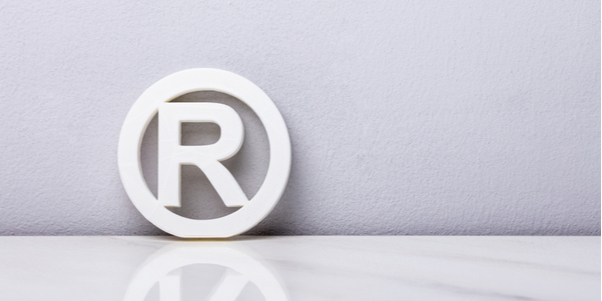Rob White is a Senior Chartered Trade Mark Attorney at Groom Wilkes & Wright. Based in Hitchin, GWW was established fifteen years ago to provide businesses in the local area with trade mark services at competitive, non-London prices.
GWW handle all aspects of trade mark and design law. They offer focused, strategic advice; carry out trade mark clearance searches; prepare and file trade mark applications; and deal with enforcing trade mark rights, managing the portfolios of small start-ups through to well-known brands including Coors, Nandos and Iceland.
Rob spoke to us about how important it is that companies have the proper protection in place when trading in overseas markets and talked us through the different systems that are available. He also explains what businesses need to do to ensure they have the right protection in place once the UK leaves the EU at the end of the year.
Why is it important for businesses to have overseas protection?
With Brexit looming and no obvious deals in place with Europe, Rob tells us it’s now more important for UK businesses to be establishing export markets.
If a business has a UK trade mark, it’s important to ensure it’s properly protected in other territories as well, where goods/services are being offered or there is an intention to do so. This is particularly the case with regards to goods, where it’s crucial to prevent counterfeits and unauthorised goods, e.g. for medical or food products that have to meet certain standards.
"If you have a registered trade mark in place, it’s another string to your bow to be able to ensure that the mark is being used properly and that anyone who is copying it or is doing something that is damaging to your brand can be more easily stopped.”
What protection systems are available?
There are a number of different protection systems available;
EU Trade Mark
The EU Trade Mark covers all the member states in a single trade mark application, saving businesses from having to file 27 different applications which would be incredibly costly and time-consuming.
“This is hugely popular and it’s very rare for a business with an interest in a couple of member states to file individually with those countries. If you’re interested in just a couple, then it’s still worthwhile and more cost-effective to file an EU Trade Mark.”
International Registration (IR)
This is a system of international registration of trade marks called the Madrid Protocol. There are over 100 member countries, including the EU, the US, Canada, Australia, New Zealand, China, India, and Brazil.
A company can ‘designate’ as many of those countries as they want. They get a single trade mark that applies to all the countries they choose to designate. If any changes are needed to an IR, such as ownership, this can be done once and apply to all designations. In terms of portfolio management, it’s very efficient and cost-effective.
“The analogy I normally use is that you need a root - a base mark where your country is doing business or has its main place of business, e.g. the UK, and that’s the root of your tree. Then the designations are the branches that come off your tree.
One of the benefits is that after initially filing for, say 10 countries, in two years time, if you want to add three more countries and they are members, then you can do subsequent designation and they effectively become new branches to go onto the same tree."
As Rob also explains, companies that go down the IR route and designate the EU, don’t therefore need to register separately for the EU Trade Mark. The IR route, therefore, becomes a simple and cost-effective solution for anyone wanting to register in both the EU and one or more other overseas markets.
National applications in individual countries
If a company is only looking at one market, then it becomes less efficient to take the IR route and a national application in the relevant market is more suitable. It is also the only route for registering a trade mark in countries that aren’t currently members of the IR system, e.g. South Africa.
“At GWW, we have partners in every country in the world. We are able to search, register, file, enforce and do whatever needs doing to a trade mark in any of those territories.”
What will Brexit mean for EU Trade Marks?
At the moment, the EU Trade Mark covers the UK. But after we leave the EU on the 31st December 2020, it won’t necessarily automatically extend to the UK. Rob explains what this means for businesses who already have a registered EU Trade Mark and for those who are thinking about expanding their trade mark;
Companies with a registered EU Trade Mark will get an automatically created equivalent UK mark. That UK mark will then be allocated its own number and when the time comes for renewal, it will need to be renewed in its own right as a UK Trade Mark.
Companies who have a pending EU Trade Mark at the time that Brexit happens won’t get an automatically created equivalent UK mark. These businesses will have a period of 9 months to opt to extend to the UK if they want to, which would then require the payment of UK fees and the creation of what would be a normal UK Trade Mark. It will however, retain the filing date of the original EU mark.
Companies currently thinking about expanding their trade mark should be looking to secure both a UK Trade Mark and an EU Trade Mark now, due to the timings.
“Anyone that’s thinking about expanding their trade mark and is interested in the EU, then the advice at the moment, given the time we have left before Brexit, is that they should be securing both an EU and a UK Trade Mark. UK Trade Marks go through quite quickly, so if you have an interest in the UK and EU, then it's better to file separately at the moment."
What concerns are there around copycat products and bad faith filings in the Chinese market?
For a long time, China has been considered what Rob describes as “the wild west of trade marks”, with lots of copycat products and bad faith filings;
“Chinese companies or individuals have been known to monitor what’s been filed on the EU or UK Trade Mark Register, for example, and go and create the same thing in China. You then have a situation where if you want to expand into China, or you want to manufacture your goods there, then someone else owns your trade mark, which is a nightmare.”
Although the Chinese authorities are starting to recognise the extent of the problem and put new laws in place to stamp out bad faith filings, Rob’s advice for companies whose goods are going to be exposed in the Chinese market or made there for export is to register a trade mark before copycats have a chance to get in there.
“China is a member of the IR system, so if you’re a UK business selling into Europe and you’re going to manufacture in China to export for example, then it’s sensible to think about an IR that has an EU branch and a China branch on it. This will give you protection against counterfeits and unauthorised products.”
Registering a trade mark in the markets you trade or manufacture in can help you to properly protect and enforce your goods and services. The IR route is a great option for businesses with interest in more than one market, as it is more cost-effective, easier to manage, and gives you options to expand to new markets in the future with little effort. But there is no one-size-fits-all solution, because it will depend on what markets are of interest to each individual business.
For trade mark and overseas protection advice for your business, you can contact Rob on 01462 714300 or via info@gwwtrademarks.com. Or to visit the website, click here.





![The Bedford College Group logo [WHITE]](https://www.chamber-business.com/hs-fs/hubfs/The%20Bedford%20College%20Group%20logo%20%5BWHITE%5D.png?width=139&height=81&name=The%20Bedford%20College%20Group%20logo%20%5BWHITE%5D.png)
